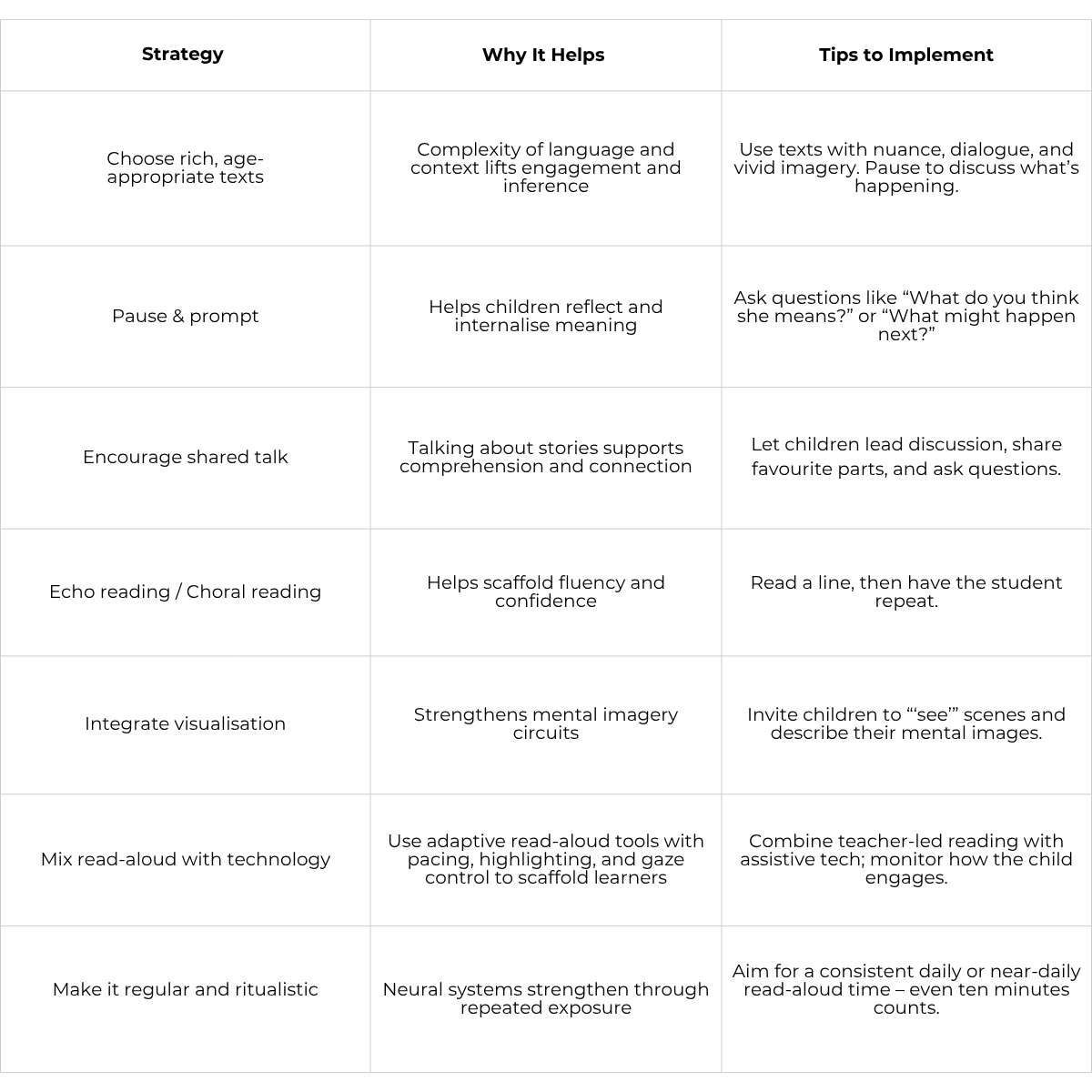The Science of Reading Aloud: Why It Builds Brains Beyond Literacy
When we think of reading aloud, we often see it as a stepping stone to helping children with vocabulary, fluency, and comprehension. Increasingly, research shows that its impact reaches much further. Reading aloud not only builds readers, it also promotes brain development. From memory to social understanding, and from confidence to connection, this simple habit brings lifelong benefits.
How Reading Aloud Shapes the Brain
Boosts Memory
Speaking words out loud improves recall, a phenomenon known as the production effect. By seeing, saying, and hearing words, children create stronger memory traces than through silent reading alone.Strengthens Neural Connections
Reading aloud engages multiple systems at once: vision, speech, hearing, and language comprehension. This multisensory workout reinforces the links between brain regions, building foundations for focus, problem-solving, and flexible thinking.Supports Comprehension for Struggling Readers
For children who find decoding difficult, hearing text read aloud provides a framework for understanding. Assistive technologies, now used in many UK classrooms, show that combining audio with visual text can raise comprehension and confidence.
Benefits Beyond Literacy
Reading aloud helps children develop skills that extend well beyond the classroom:
Attention and focus: Following along encourages concentration.
Imagination: Stories stimulate mental imagery and creative thinking.
Empathy and perspective: Hearing stories deepens emotional understanding.
Confidence and independence: Shared reading empowers children to engage with texts they might find challenging alone.
Stronger relationships: Reading together nurtures bonds between children, parents, and teachers.
Practical Strategies for Parents and Teachers
To maximise the brain-building benefits of reading aloud, here are strategies you can adopt:
The Role of Technology, and the Rise of ASR
As educational practice evolves, digital tools now play a significant part in making read-aloud more accessible and engaging. A key advancement is Automatic Speech Recognition (“ASR”) technology. ASR offers direct, real-time feedback as children read aloud, helping them refine fluency and accuracy independently. This proves invaluable for those children who may not have adult support at home, allowing them to build confidence through solo practice.
For teachers, ASR applications provide data and analysis regarding each child’s reading performance, helping guide in-class learning and allowing for targeted intervention. Many solutions also incorporate gamification badges, progress scores, and reading challenges – which serve to increase engagement and motivation in young readers.
Looking Ahead: Read-Aloud in a Changing World
For parents, reading aloud is a daily ritual that goes beyond story time. Only ten minutes of shared reading can boost a child’s confidence, imagination, and sense of connection. For teachers, it is a proven strategy to support comprehension, especially when layered with evidence-based practices and adaptive technologies now widely available in UK classrooms.
Digital platforms utilising ASR, now put these scientific principles into practice. Fonetti, for example, uses ASR to provide children with instant feedback on their reading, while engaging them through gamified rewards and progress tracking. This fusion of science and technology helps struggling readers build independence, without diminishing the human connection found in shared reading experiences.
The opportunity for both parents and educators lies in treating reading aloud not as an optional extra, but as a cornerstone of development.; It is a practice that supports brain growth, literacy, and, ultimately, the life skills young people need to thrive in the ever-changing future.


